Important collection of colonial Trinidad documents, compiled by the man behind its colonization; including a manuscript census.
- Regular price
- €17.500,00 EUR
- Regular price
-
- Sale price
- €17.500,00 EUR
- Unit price
- per
Phillipe Rose Roume de Saint Laurent (1743-1804).
Isla de la Trinidad de Barlovento / Roume de St Laurent [Collection of 8 Colonial Trinidad Documents].
Trinidad, 1786-1801.
6 manuscript and 2 printed documents (see detailed list below).
An important collection of colonial Trinidad documents, compiled by the pivotal figure behind the island’s colonization, Phillipe Rose Roume de Saint Laurent. This ambitious French Creole planter from Grenada was instrumental in transforming Trinidad from a sparsely inhabited territory into a thriving plantation economy. He saw the potential of the island and lobbied Spanish colonial authorities to encourage settlement. His efforts culminated in the Cedula of Population of 1783, which attracted a significant influx of French settlers and their enslaved African people, boosting the island's population from under 1,400 in 1777 to over 18,000 by 1797. This immigration wave not only bolstered Trinidad’s agricultural output, particularly in sugar production, but also established a unique social structure influenced by French culture, free persons of color, and enslaved Africans.
His collection of documents that we offer here highlights the population and economic changes caused by his plans, particularly focusing on the transition of ownership from Spain to Britain. Possibly the most significant item is a manuscript census of Spanish colonial Trinidad for the year 1784, meticulously detailing the island's population by districts and demographics, including distinctions between old and new colonists, and the status of indigenous inhabitants. Other notable items include official documents relating to maritime activities, capitulation agreements outlining the terms of Trinidad's cession from Spain to Britain in 1797, and a printed copy of the Treaty of Amiens. These documents collectively offer a comprehensive overview of the administrative, social, and economic transformations that Trinidad underwent during this pivotal period in its history, reflecting the strategic and cultural shifts that shaped the island’s colonial legacy.
The University of the West Indies holds photocopies of three eighteenth-century manuscripts relating to the island of Tobago, 1787-1793, also compiled by Roume de Saint Laurent (not seen by us).
The individual items are:
· Manuscript census, titled “Estado que manifiesta el en que se halla la población de la Isla Trinidad de Barlovento al 31 de Diciembre de 1784”. Folio, 25 x 39 cm. Manuscript in ink on laid paper watermarked “J Whatman”. Verso blank. The chart is divided into fourteen districts to facilitate better understanding and easier governance. The colonial population is categorized into old and new colonists, with further distinctions based on sex, age (adults and children), and the number of enslaved people owned by each group. The indigenous population is detailed by town, with a distinction between tributary and non-tributary inhabitants. It includes specific numbers on the population, their status, and age groups. The towns listed in the chart are: Arauca, Tacarigua, Cuara, Savana Grande, Monserrate, Savaneta, Guairia, Siparia, Cumana, Toco, and Salibia. The census sheet is attached to another sheet with the inscription: “Cédula o Reglamento de Poblacion y Comercio de la Isla de la Trinidad de Barlovento Reflexiones sobre algunos de sus articulos = Memorias de Mr. de San Laurent”. This sheet serves as the wrapper for the collection and is titled on the fold: “Isla de la Trinidad de Barlovento / Roume de St Laurent”.
· A stamped and signed official document relating to maritime activities in Trinidad, dated 1787, names unidentified. 2 pp.
· A manuscript copy in Spanish of the capitulation agreement for the surrender of the Island of Trinidad between Spain and Britain on March 12, 1797. It outlines the conditions for the withdrawal and treatment of Spanish troops and officials, the handling of prisoners, and the rights and properties of the inhabitants of Trinidad under British rule. Including the preservation of property, religious freedoms, and the rights of free people of color. 4 pp.
· A manuscript set of warnings or advisories, dated July 18, 1795, based on observations of the coast of Trinidad and recommendations about the strength and deployment of various vessels to ensure security and aid in commerce. Signed, unidentified.
· A printed copy of the Gazeta de Madrid of March 24, 1801. This contains news about Trinidad and the repercussions for Chacon’s surrender.
· A printed Spanish copy of the Treaty of Amiens, in which is declared that Britain retained Trinidad: Real Cedula de S.M. y Señores del Consejo, en que se manda observer, guardar y cumplir el Tratado definitivo de Paz concluido entre el Rey nuestro Señor, la República Francesa y la República Bátava de una parte, y el Rey del Reyno Unido de la Gran Bretaña y de Irlanda de la otra. Madrid, en la Imprenta Real, 1795. [15] pp.
· Manuscript Artículo de Capitulación, dated February 18, 1797, outlining the terms for the surrender of the Island of Trinidad from Spanish control to British forces. The agreement includes detailed conditions for the withdrawal and treatment of Spanish troops and officials, the rights of the inhabitants, and the handling of property and legal matters.
· A manuscript preliminary peace treaty between the Republics of Colombia, Peru, Buenos Aires, and the Provisional Government of Chile, and Britain. It outlines 15 articles that establish perpetual peace, mutual recognition of sovereignty, fair treatment of commerce and property, the non-interference in internal conflicts, and specific provisions for the return of prisoners, the evacuation of occupied ports, the repayment of debts, and the arbitration of disputes. The treaty was signed in London on October 1, 1801.
Condition: Wrapper damaged and repaired on the fold. Some minor staining and foxing but overall in very good condition.
Literature:
Gérard Besson, Roume de Saint Laurent: a memoir. Paria Publishing Co. Ltd., [St. Anns, Trinidad and Tobago], 2015.
Barbara Ifill, “The Richest Trade Centre of the Indies: A Vision of Trinidad’s Future.” In: Caribbean Quarterly, vol. 10, no. 4, 1964, pp. 33–45.
Couldn't load pickup availability
Share





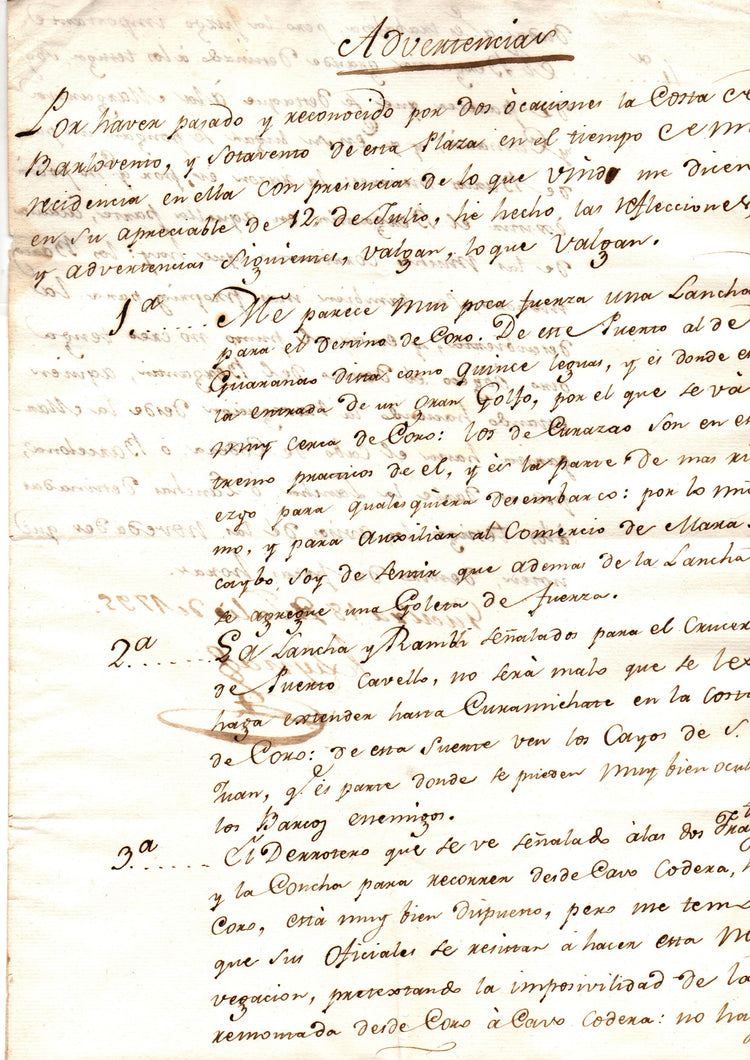
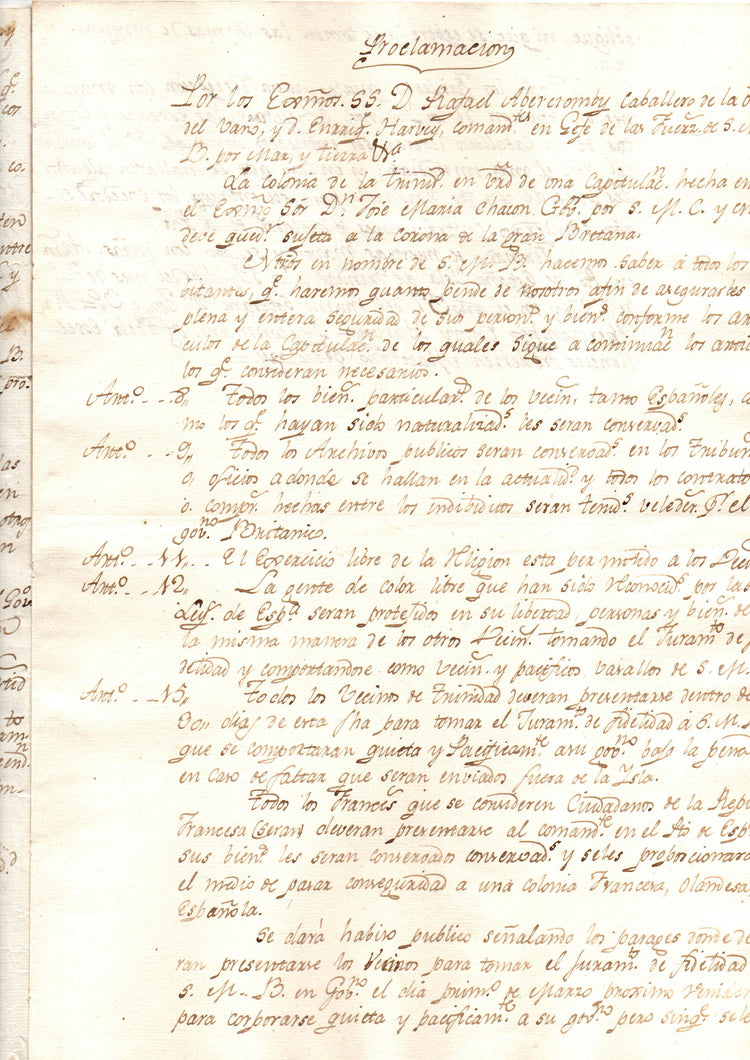
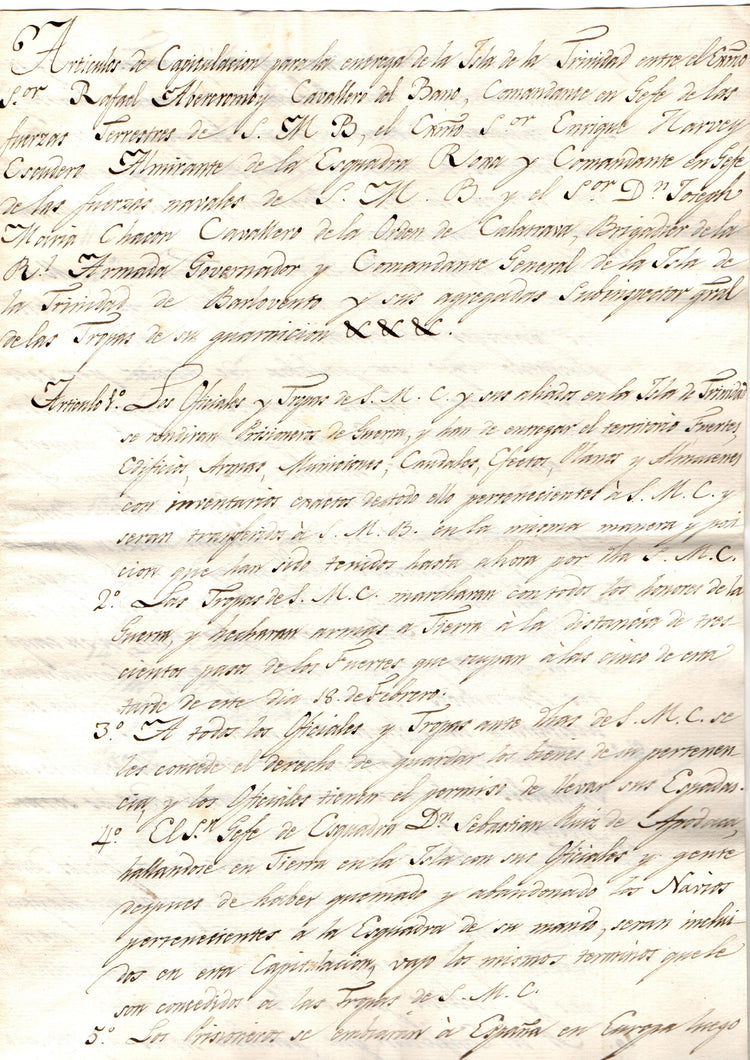
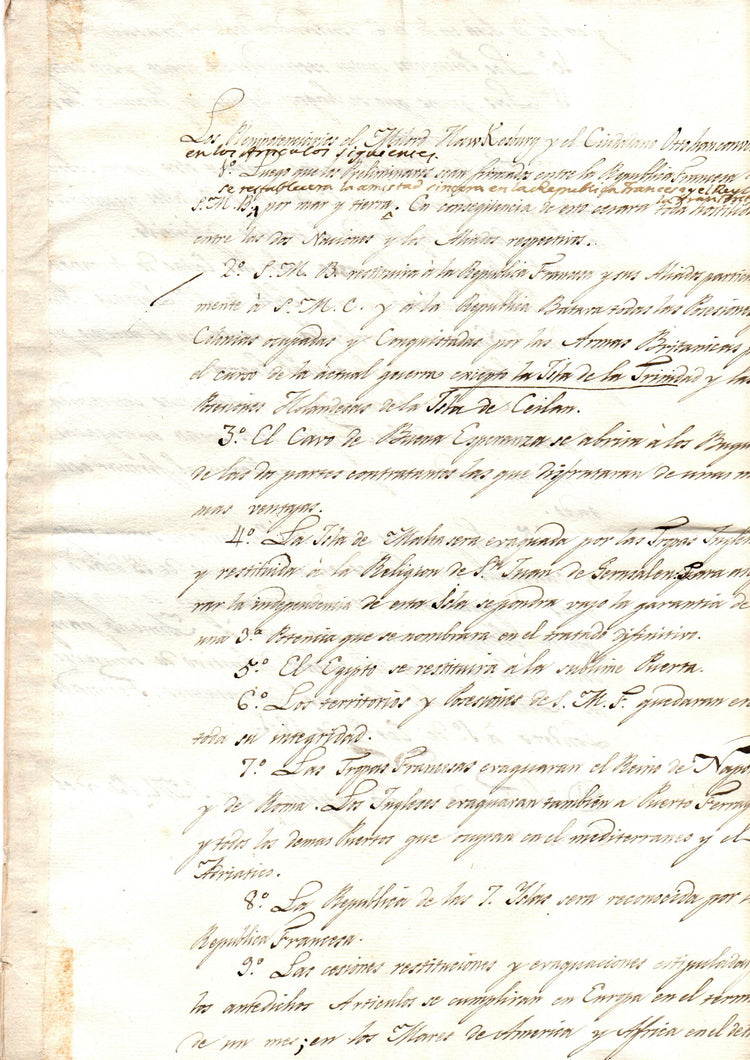
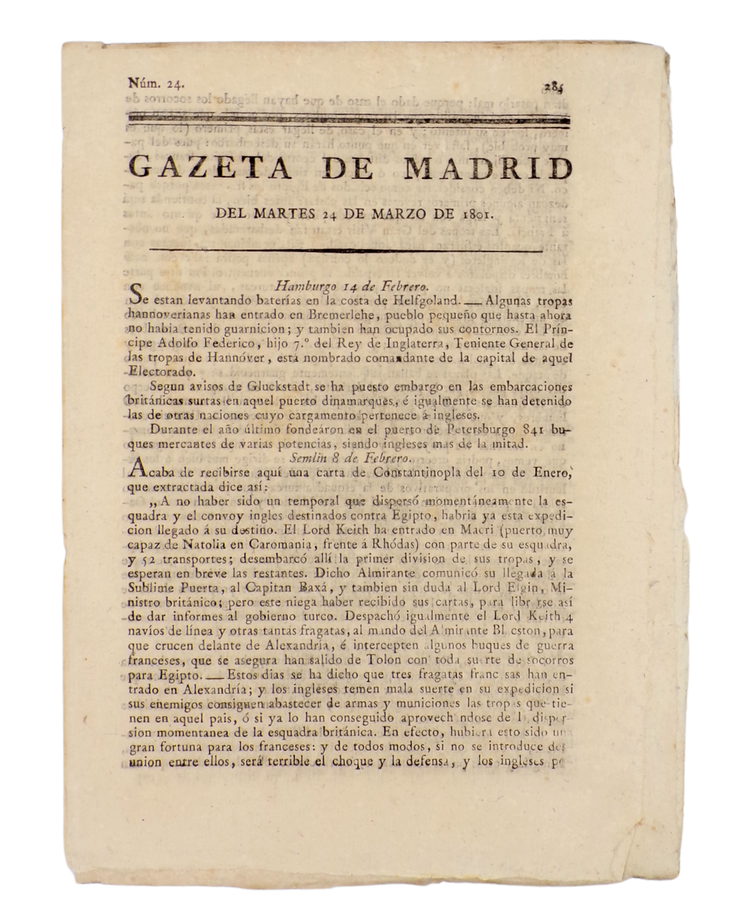
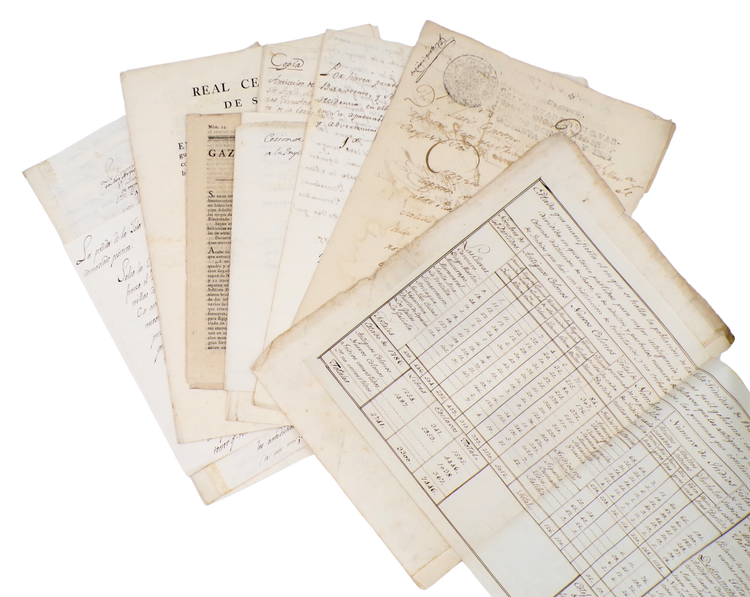
Contact
Email: hugo@artemrarebooks.com
Phone: +31651042297
Visit us on appointment at:
Former US Embassy
Lange Voorhout 102
2514EJ
The Hague (The Netherlands)
Shipping address:
Nannie van Wehlstraat 51
2548MN
The Hague
The Netherlands











